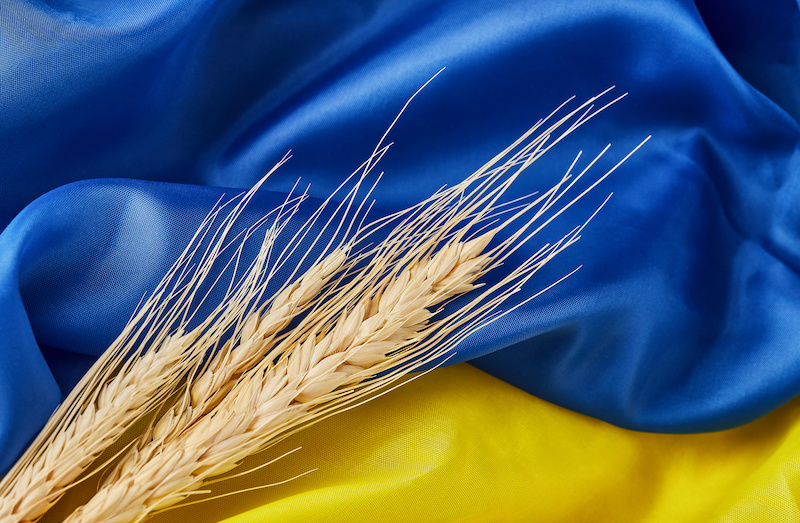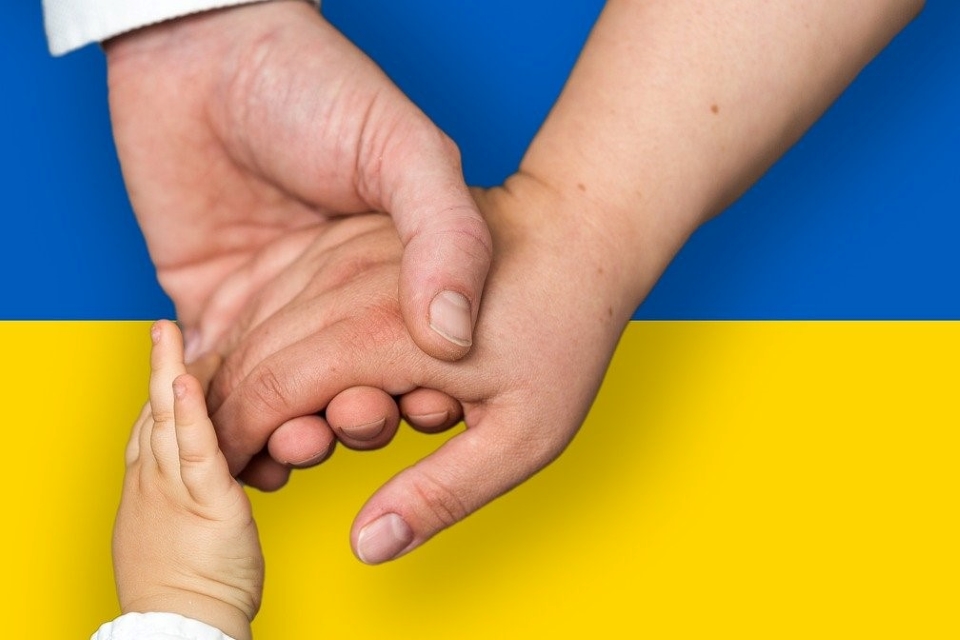At the start of 2022, international funding for humanitarian aid was already severely strained, with the United Nations (UN) estimating that a record number of people will need assistance this year. The COVID-19 pandemic had compounded pre-existing and protracted humanitarian crises and sent shockwaves through the global economy. Yet global humanitarian aid plateaued in 2020. Now, as the war in Ukraine escalates, aid donors are under pressure, once again, to make choices and set priorities.
In this blog, we focus on the implications of the war in Ukraine for EU humanitarian aid and development cooperation.
Over the last decade, the EU has been the largest donor to Ukraine. With a full-scale war on its borders, the EU will be hard pressed not to continue to give priority to Ukraine. But does this mean a tilt in the EU’s development and humanitarian aid spending towards Europe, and away from other countries and regions is inevitable? Economic and food security impacts are already being felt beyond Ukraine’s borders, as far as the Middle East and North Africa. These shocks are likely to be felt severely in African countries that are still feeling the effects of the downturn prompted by COVID-19.
There is no doubt that the EU will have to increase financial support for many of its partners—near and far—to help them cope. But if spending in Ukraine comes at the expense of sub-Saharan Africa, this could have vast implications for the EU’s relations with Africa.
Will EU humanitarian aid be pulled from other crises?
From Afghanistan to Ethiopia and Yemen to Myanmar and Syria, 274 million people worldwide will be dependent on humanitarian aid in 2022. The EU has already allocated €221 million in emergency assistance to Afghanistan and an additional €268.3 million "humanitarian plus" aid package, implemented through UN agencies has been agreed to support health and education projects and provide livelihoods for Afghans. And the EU pledged €154 million for 2022 to support those most in need in Yemen.
The EU has allocated more than €193 million in humanitarian aid to Ukraine since 2014 and it has announced €500 million from the EU budget to deal with the tragic humanitarian consequences of the war, both inside Ukraine and beyond. This includes at least €85 million for basic needs, €120 million as budget support and €330 million for emergency assistance, all from the EU’s Neighbourhood, Development and International Cooperation Instrument (NDICI)-Global Europe.
The European Commissioner for Crisis Management, Janez Lenarčič, has said explicitly that the European Commission will not pull funds from other crises around the world as it responds to the escalating conflict in Ukraine.
But this may become increasingly difficult as the number of refugees multiplies by the day and the humanitarian situation continues to deteriorate rapidly.
The EU is already looking at ways to redirect finance originally meant for development investments within EU Member States, to help host countries cope with the influx of refugees from Ukraine. It has agreed to tap into money that was earmarked for EU cohesion and regional development spending to assist refugees through a new initiative—Cohesion’s Action for Refugees in Europe (CARE). In addition, EU Member States will be able to use funds under REACT-EU, the EU’s internal post-pandemic public investment plan, to support refugees. But timing is of the essence. With an estimated four million Ukrainians fleeing so far, and more likely to come to the EU, the clock is ticking.
What’s more is that the region surrounding Ukraine is one of the world’s most important areas for grain and agricultural exports, and the conflict is already having an impact on food supply chains worldwide. The spike in the price of bread—combined with a sharp rise in energy prices—could have a severely destabilizing effect on the regions which already have some of the highest levels of food insecurity in the world, which could deepen humanitarian crises and mean higher levels of need in these most vulnerable countries.
Will EU development aid be reprogrammed for Ukraine at the expense of other countries?
As a lower middle-income country, Ukraine is a large recipient of official development assistance (ODA). In 2019, the country received close to US$800 million (€724 million) in ODA from the member countries of the Development Assistance Committee (DAC). Together with Armenia, Azerbaijan, Georgia and Moldova, Ukraine is part of the Eastern Partnership, a dimension of the European Neighbourhood Policy, and shares a border with four EU Member States. As illustrated in Figure 1, the EU has been the largest provider of ODA to the country in recent years, ahead of the United States and Germany.
Figure 1: Share of ODA to Ukraine, by donor, gross disbursements, 2011-2019
In 2020, Ukraine became the top bilateral recipient of EU ODA ahead of other countries from the EU’s Southern and Eastern Neighbourhood such as Turkey, Morocco, and Egypt. Prior to the Russian invasion, the EU had set aside €640 million in bilateral aid under its Multi-annual Indicative Programme (MIP) for the period between 2021 to 2024.
Figure 2: Top 10 bilateral recipient of EU ODA in 2020, gross disbursements, USD millions
Today, the situation has changed dramatically, and the financing needs have increased considerably. The IMF expects Ukraine’s GDP to fall by at least 10 percent in 2022 and estimates the country’s current gross external financing, subject to high uncertainty, at US$4.8 billion (€4.3 billion) in 2022. The Fund anticipates this amount to be covered by the multilateral development banks (MDBs) and International Financial Institutions (IFIs), the EU, as well as other bilateral partners.
In January 2022, the European Commission proposed to step up financial support to Ukraine with a new emergency macro-financial assistance (MFA) package of up to €1.2 billion and €120 million in budget support. However, there is not much more room for manoeuvre, given that the EU’s budget for international cooperation for the period between 2021 and 2027 has already been set. The EU’s development instrument, NDICI-Global Europe, has a maximum ceiling of €79.5 billion with a benchmark of at least €19.32 billion for the EU Neighbourhood, and at least €29.18 billion for sub-Saharan Africa. These allocations constrain any diversion of funds from sub-Saharan Africa to the EU Neighbourhood.
However, the NDICI-Global Europe also includes a “cushion” of €9.53 billion over the seven-year period that can be used to respond to the urgent needs in Ukraine as well as emerging threats to food security in sub-Saharan Africa and in the Middle East and North Africa (MENA) region. This cushion might soon reveal itself to be a drop in the ocean in a world facing what the World Food Programme (WFP) calls the “perfect storm of COVID inflation, climate shocks and unresolved wars.” This year alone, according to the WFP, there is a US$8 billion shortfall.
Were Ukraine to be granted the status of candidate country, it would have a significant impact on the type of funds that the country would be eligible to receive. Candidate and potential candidate countries are beneficiaries of the Instrument for Pre-Accession (IPA). For the period 2021-2027, the IPA has a budgetary envelope of €14.62 billion for the current seven candidate and potential candidate countries (Albania, Bosnia and Herzegovina, Kosovo, North Macedonia, Montenegro, Serbia, Turkey). In this scenario, the objectives of the funds disbursed to Ukraine would shift to include support for additional policy and economic reforms “to progressively align to Union rules, standards, policies and practices with a view to Union membership.” This change of status for Ukraine could translate into a notable increase in EU ODA. As illustrated in Figure 3, the EU spent around €25.9 of ODA per capita in candidate or potential candidate countries and €18.5 of ODA per capita in developing countries in the Southern and Eastern European Neighbourhood.
Figure 3: EU ODA per capita in candidate/potential candidate countries and in the EU Neighbourhood in 2020, EUR.
Will it affect the EU’s relationship with Africa?
Russia’s invasion of Ukraine took place one week after the 6th EU-Africa Summit where the two sides had one common goal: to press the reset button on the EU’s relations with Africa after years dominated by mistrust, a mismatch of expectations, and anxiety. With the launch of the Global Gateway—the EU’s €300bn global infrastructure investment package, half of which was earmarked for Africa—the EU had been at pains to present itself as a priority partner for Africa.
Discussion on peace and security at the EU-Africa Summit centred on renewed and enhanced cooperation to address common challenges such as instability, radicalisation, violent extremism, and terrorism, as well as tackling the root causes of conflicts and addressing the entire conflict cycle through an integrated approach. But, with a war raging on Europe’s doorstep, it is clear that the EU’s security priorities will shift, along with its military assistance, to its Neighbourhood. In a watershed move in response to Russia’s invasion of Ukraine, the EU initially mobilized €500 million drawn from its off-budget “European Peace Facility” financing instrument (that has a spending ceiling of €5.6 billion for the period 2021-2027) to provide military aid to Ukraine. It subsequently agreed an additional €500 million from the facility. The European Peace Facility evolved out of the previous Africa Peace Facility which was intended solely for African peace support operations. It has already funded operations in the Western Balkans, the Eastern Neighbourhood, in particular Ukraine, as well as sub-Saharan Africa.
Two weeks after the EU-Africa Summit, 17 African countries abstained from the UN vote on Ukraine. The reasons for this include the bilateral and ideological ties which many African countries share with Russia, which date back to liberation against colonialism and Russian military cooperation in support of territorial integrity. Russia is also the largest exporter of arms to sub-Saharan Africa. It was South Africa that led a significant chunk of the African continent in abstaining from the vote and accused the EU of double standards. In a tweet directed at the EU Ambassador to South Africa, Clayson Monyela, South Africa’s Head of Public Diplomacy wrote, “Let’s not forget the people of Palestine, Yemen, Syria, Libya and Somalia. The EU should "condemn" aggressors in these cases as well. Consistency in our Diplomatic endeavors is critical.” This view is echoed across the continent—that not all armed conflicts are treated with the same lack of resolve that many of the conflicts in Africa get.
As the stand-off between the liberal economic order and the authoritarian one intensifies, African countries may find themselves having to take sides in this bi-polar world. The emergence of this divide in international affairs will complicate the EU’s ability to deepen its diplomatic and commercial relations with many of the world’s most populous countries and fastest-growing economies in Africa.
Conclusion
As war rages at its borders and the number of refugees multiplies by the day, the EU is faced with hard choices—between Ukraine and the rest of the world and between the urgency of humanitarian need and longer-term post-war reconstruction. Yet, with a rapidly depleting humanitarian aid budget, a development budget that has already been programmed, and a commitment on the line to reset its relationship with Africa, there is a real risk of the EU over-promising and under-delivering.
Disclaimer
CGD blog posts reflect the views of the authors, drawing on prior research and experience in their areas of expertise. CGD is a nonpartisan, independent organization and does not take institutional positions.







